iPhone marks 10 years but what does future hold?
As the iPhone marks 10 years, its future is looking decidedly different.
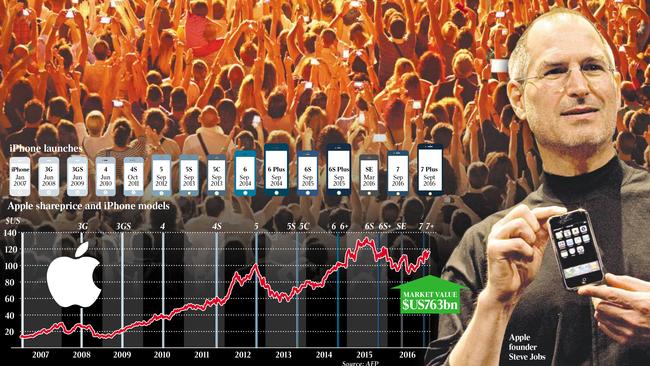
It’s 2027, and you’re walking down the street, confident you’ll arrive at your destination even though you don’t know where it is.
You may not even remember why your device is telling you to go there.
There’s a voice in your ear giving you turn-by-turn directions and, between, prepping you for this meeting. Oh, right, you’re supposed to be interviewing a dog whisperer for your pet psychiatry business. You arrive at the coffee shop, look around quizzically, and a woman you don’t recognise approaches. A display only you can see highlights her face and prints her name next to it in crisp block lettering, Terminator-style. Afterwards, you’ll get an automatically generated transcript of everything the two of you said.
As the iPhone this week marks the 10th anniversary of its first sale, it remains one of the most successful consumer products in history. The iPhone is one of the bestselling items: about 1.3 billion have been sold, generating more than $US800 billion ($1.15 trillion) in revenue. It skyrocketed Apple into the business stratosphere, unlocking new markets, spawning an enormous services business and helping turn Apple into the world’s most valuable publicly traded company.
But by the time it celebrates its 20th anniversary, the “phone” concept will be entirely uprooted: That dog whisperer scenario will be brought to you even if you don’t have an iPhone in your pocket.
Sure, Apple may still sell a glossy rectangle. (At that point, iPhones may also be thin and foldable or roll up into scrolls like ancient papyri.) But the suite of apps and services that today in centred on the physical iPhone will have migrated to other, more convenient and equally capable devices — a “body area network” of computers, batteries and sensors residing on our wrists, in our ears, on our faces and who knows where else. We’ll find ourselves leaving the iPhone behind more and more often.
Trying to predict where technology will be in a decade may be a fool’s errand, but how often do we get to tie up so many emerging trends in a neat package?
Apple is busy putting ever more powerful microprocessors, and more wireless radios, in every one of its devices. Siri is getting smarter and popping up in more places. Meanwhile, Apple is going deep on augmented reality, giving developers the ability to create apps in which our physical world is filled with everything from Pokemon to whatever Ikea furniture we want to try in our living rooms.
All these technologies — interfacing with our smart homes, smart cars, even smart cities — will constitute not just a new way to interact with computers but a new way of life. And of course, worrisome levels of privacy invasion.
Apple’s acquisitions — it buys a company every three to four weeks, chief executive Tim Cook has said — tend to be highly predictive of its future moves. Since it first bought Siri in 2010, Apple has continued to make acquisitions in artificial intelligence, among them Lattice Data, Turi and Perceptio, all of which specialise in some form of machine learning.
The company reportedly is working on its own chips for AI. Apple is developing a processor devoted specifically to AI-related tasks. The chip, known internally as the Apple Neural Engine, would improve the way the company’s devices handle tasks that would otherwise require human intelligence — such as facial recognition and speech recognition
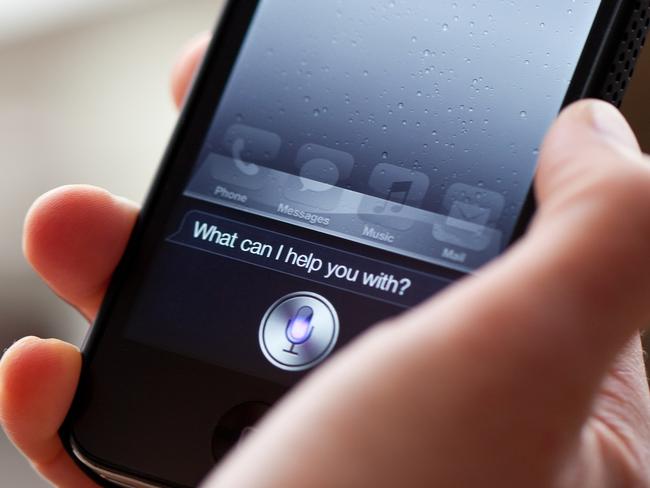
Apple’s preview of iOS 11, with deeper integration of Siri than ever, suggests it hopes to make Siri capable of doing nearly everything on an iPhone that we now do through its touch interface.
Apple also has made many acquisitions related to augmented reality — the overlay of computer interfaces and three-dimensional objects on a person’s view of the real world — including Primesense and Metaio.
Cook has said he is so excited about AR he wants to “yell out and scream”.
The iPhone is so revolutionary it raises expectations that the company will introduce radical new products regularly, says Patrick Moorhead, a technology analyst with Moor Insights & Strategy. “That’s what I call the leadership burden,” Moorhead says.
As Apple has grown, pressure has intensified to make each iPhone model better than the last. As iPhone revenue fell for the first time in Apple’s fiscal 2016, and its market share dropped in China, Cook told analysts the key to regaining share was “innovating like crazy”.
“If we do a really great job of that, which we will, then I’m confident that we’ll do well,” he says.
Apple fans are waiting for the newest iPhone, the 10th anniversary model expected later this year, to see whether Cook makes good on that promise.
The iPhone boom has overshadowed Apple’s other products, making the company dependent on one product line for two-thirds of its sales. Any big stumble with the iPhone could be calamitous.
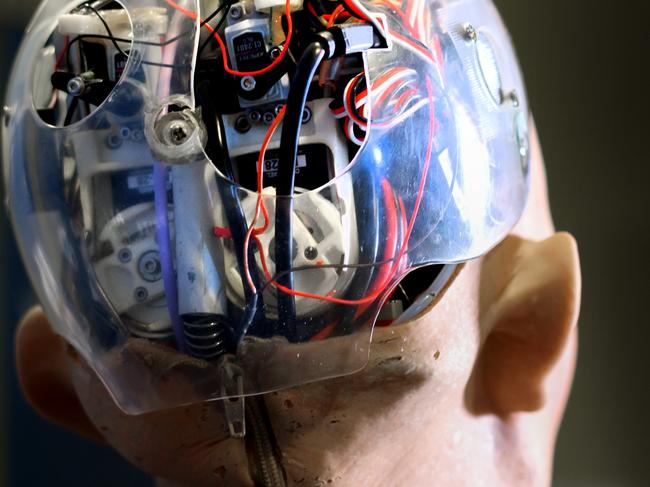
However, fast-forward to 2027, and the problem of bulky augmented reality headsets such as Microsoft’s HoloLens should be solved, which means Apple and others are likely to release some sort of smart eyeglasses.
With their ability to convincingly supplement our visual and auditory reality, delivering information at the time and place most appropriate, they’ll occasion a cultural change as big as the introduction of the smartphone itself.
“What you’re going to see with all this augmentation is the psychology of using your phone could change dramatically,” says Ryan Walsh, a partner at venture capital firm Floodgate, who from 2014 to 2016 directed product management for media at Apple.
“Instead of using your phone to get away from the world, you’ll use it to join in the world in a much deeper and more meaningful way,” he says.
Augmented reality and artificial intelligence also will benefit from the internet of things trend: everyday gadgets getting sensors, actuators and a wireless internet connection. Apple controls smart-home products with HomeKit. It aggregates health information with HealthKit, and ties in the car (CarPlay), cash register (Apple Pay) and even the StairMaster (GymKit). Apple clearly wants its devices to connect to everything on Earth.
With our every action mapped to every outdoor and indoor space we inhabit — combined with the predictive power of AI and distributed across a suite of devices for which Siri has become the default interface — the result could be a life directed by our gadgets, a sort of Choose Your Own Adventure for our daily routines.
At first, this will be straightforward. Having automatically filled our calendars using the kind of scheduling AI that already exists, our devices will direct us from one task to another, even suggesting transport — ride-sharing, public transport or flying car. But the relationship will change as the AI gets to know more about you.
“You might be walking by someplace and it might tell you, ‘Hey, you should go in here, they make a great cup of coffee and there’s also this person you really would like, too’,” says Jonathan Badeen, co-founder and chief strategy officer of dating app Tinder, where he leads teams that think about how to incorporate Apple’s latest technology into apps.
By 2027, Apple and its competitors also will have cemented a world of trade-offs: If you want your life enhanced by AI and all the rest of this tech, you’re going to have to submit to constant surveillance — by your devices or, in many cases, by the tech giants themselves.
Apple’s bet is that you will trust it to do this: The company’s privacy stance is that it isn’t going to look at or share your data, and it will be encrypted so others can’t look at it, either.
Getting used to that won’t be easy. Just as getting in a stranger’s car or sleeping in a stranger’s home seemed crazy before Uber and Airbnb, the 2027 iPhone’s most important differentiator may be our willingness to accept things we can’t even fathom today.
ADDITIONAL REPORTING: TRIPP MICKLE





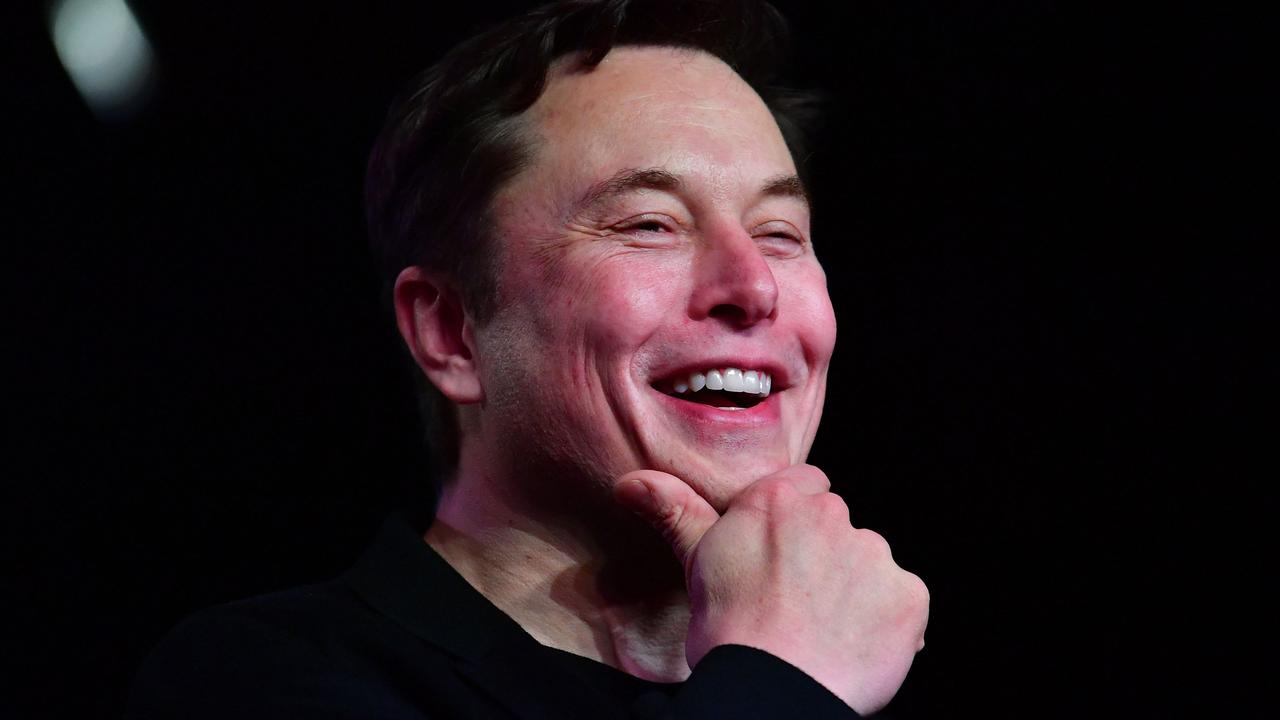
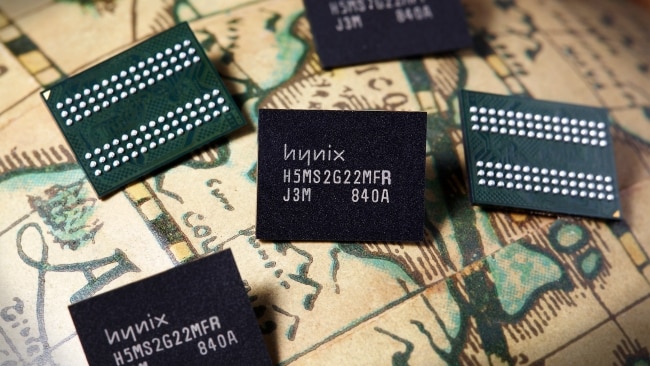
To join the conversation, please log in. Don't have an account? Register
Join the conversation, you are commenting as Logout